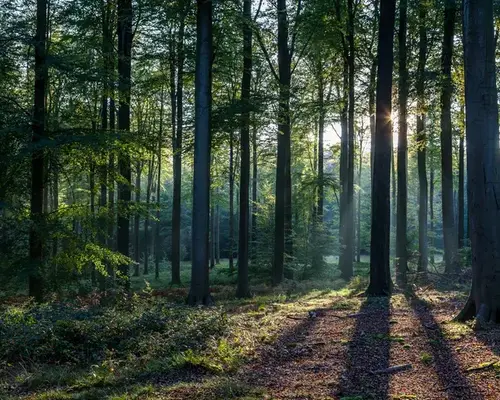India’s total forest and tree cover has increased to 8,09,537 square kilometres in 2021-22 which works out to 24.62 percent of the total geographical area of the country compared to 7,94,245 sq km (24.16 percent) in 2015-16, Minister for Environment and Forests Ashwini Kumar Choubey informed the Rajya Sabha on Thursday.
The minister said that this was an increase of 15,292 sq km of forest and tree cover of the country according to data compiled in the India State of Forest Report (ISFR 2021).
He attributed the increase to the successful implementation of the National Afforestation Programme by the Union Ministry.
The increase in India’s forest cover comes at a time when most countries have been seeing a decline in forests. The COP-26 summit at Glasgow had highlighted the worldwide concern over the diminishing tree cover as forests play a key role in fighting global warming.
The ISFR has also pointed out that the positive change India’s forest cover could be attributed to conservation measures or management interventions such as afforestation activities, participation of local people for better protection in plantation areas as well as in traditional forest areas, expansion of trees outside forests, tree plantation drives etc.
In order to achieve the targeted objectives of national afforestation programmes, the Ministry has approved merger of NAP into Green India Mission (GIM) and accordingly financial allocation for both the schemes is provided under one budgetary head so that the overall greening efforts are augmented.
The minister said that the budget allocation for the merged scheme has increased from Rs. 160 crore in the year 2020-21 to Rs. 220 crore during the year 2021-22. Besides, the funds under Compensatory Afforestation Fund Management and Planning Authority (CAMPA), inter-alia, is used for forest and wildlife management related activities including compensatory afforestation.
He said the Ministry also promotes tree plantation as people’s movement through School Nursery Yojana and Nagar Van Yojana. Tree plantation/afforestation being the multi-departmental effort, taken up across sectors by various departments of the Centre and State Governments, Non-Government Organizations, civil society, corporate bodies etc. also contributes in achieving the targeted objectives of national afforestation programmes.
According to UN report, deforestation and forest degradation continue to take place at alarming rates, which contributes significantly to the ongoing loss of biodiversity.
Since 1990, it is estimated that 420 million hectares of forest have been lost through conversion to other land uses, although the rate of deforestation has decreased over the past three decades, the UN’s Food and Agriculture Organisation.
Between 2015 and 2020, the rate of deforestation was estimated at 10 million hectares per year, down from 16 million hectares per year in the 1990s. The area of primary forest worldwide has decreased by over 80 million hectares since 1990, the FAO report points out.
Also read: Glasgow pact sees progress, but not bold enough to keep 1.5C alive (IANS Analysis)




















